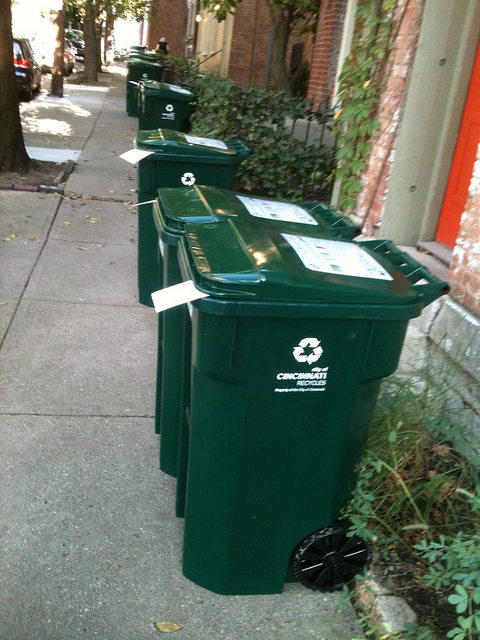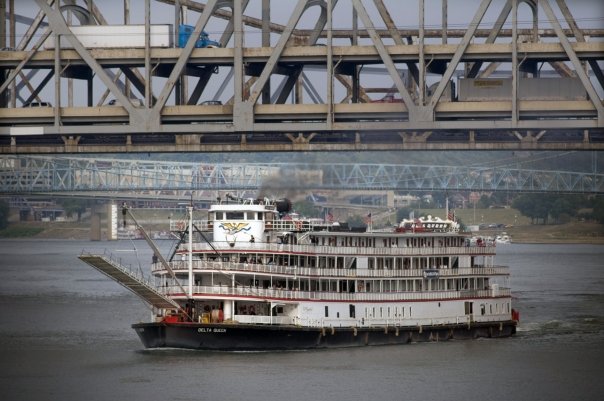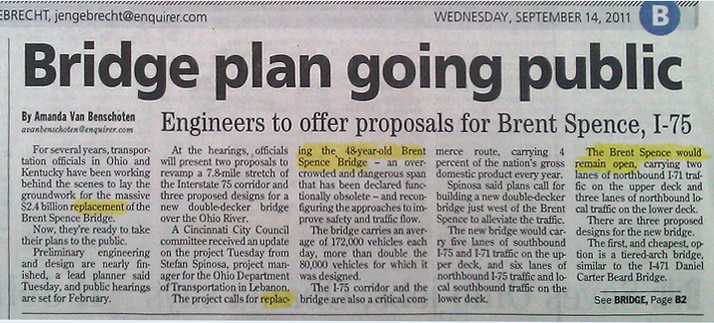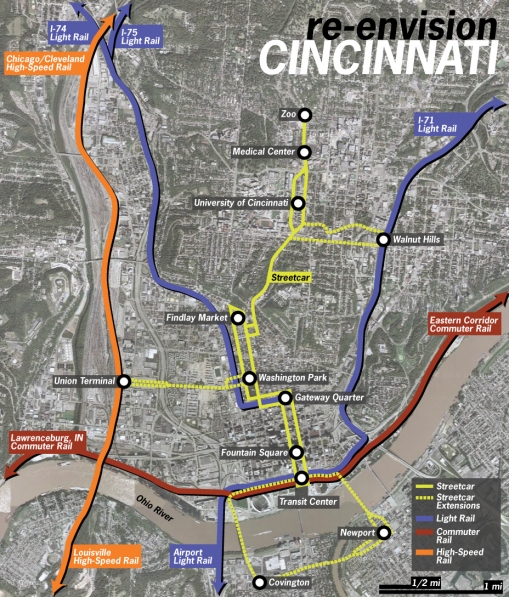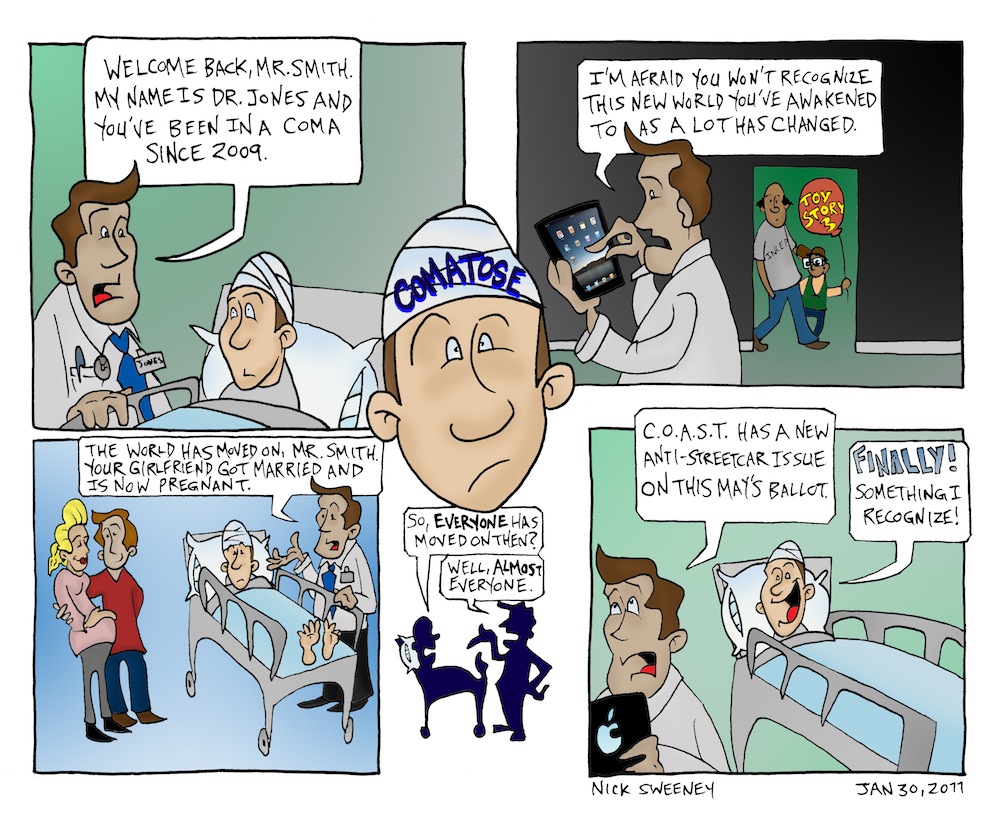Advocates for job growth, economic development, alternative transportation and Cincinnati’s future have stepped up to the plate once again. What seemed like a grand-slam finish to beginning the first steps to rail transit in the city is now contested and seemingly up for debate. Again.
Despite clear indication from the voters, the city, and (at one time) the state and federal level that the Cincinnati Streetcar project was a positive contribution to changing Cincinnati for the better, there are those who would rewrite the rule books. The first vote was not enough. It is time for another.

A small but persistent group is at it again, collecting signatures to put yet another proposal on the ballot for the fall election.
This petition, however, would prevent ANY rail transportation systems to be funded or built until 2020. A ten-year ban would force Cincinnati to miss out on an entire generation of building infrastructure, in a time when gas prices are certainly not getting any cheaper, and Cincinnatians will be desperate for options to get around.
“Nothing even remotely like this has ever been proposed in any American city. In a era of rising energy prices, Cincinnati would be handcuffing its flexibility to develop alternative means of getting citizens to work and doing the everyday things of life,” says local transit authority and activist John Schneider. “And since regional rail lines wouldn’t be able to connect within the city limits, this has serious regional implications too.”
Cincinnatians for Progress has broken down the exact language of the ballot proposal, to demonstrate how much is at stake:
———————————————————————————————————————————————————————————–
What it says: : “The City shall not spend or appropriate any money on the design, engineering, construction or operation of a Streetcar System, or any portion thereof.”
What it means: This phrase prevents the city from spending any money on anything related to preparing any kind of passenger rail transit in Cincinnati.
What it says: “Further, the City shall not incur any indebtedness or contractual obligations for the purpose of financing, designing, engineering, construction or operating of a Streetcar System, or any portion thereof.”
What it means: This language would make it impossible to accept federal grants, to issue bonds, to enter into public-private partnerships for passenger rail. Even private investment in a rail system in the city limits would be illegal.
What it says: “This Amendment applies from the date it is certified to the Charter, and will continue in effect until December 31, 2020.”
What it means: The arbitrary 10-year ban on preparation is designed to force new transit planning to start from square one in 2021. Because permanent infrastructure requires many years to develop, this language would guarantee Cincinnati sees no rail-based transit for a generation.
What it says: “For purposes of this Amendment, the term ‘Streetcar System’ means a system of passenger vehicles operated on rails constructed primarily in existing public rights of way …”
What it means: The term “streetcar system” in this amendment would ban all rail that runs in on Cincinnati streets or rights-of-way. That would prevent commuter rail and streetcars alike; even restoring the city’s historic inclines would be outlawed.
What it says: “…The term ‘City’ includes without limitation the City, the Manager, the Mayor, the Council, and the City’s various boards, commissions, agencies and departments …”
What it means: Under this language, even Cincinnati’s Metro system could not consider taking advantage of future national and regional funding programs.
What it says: “…The term ‘money’ means any money from any source whatsoever….”
What it means: This language would not only lock out local, state and federal funds, but make it illegal for corporations, non-profits and individuals to pay for rail-based transit.
———————————————————————————————————————————————————————————-
Says CFP co-chair Mark Schmidt: “[The ballot proposal is] the laziest piece of legislation ever written and an insult to the people of Cincinnati… especially those public servants who play by the rules and commit themselves to the slow and steady process of making this a more perfect union through the hard work of collaboration and compromise.”
The deadline to file a ballot with enough signatures is August 10th. If the measure succeeds, there is a tough road ahead to ensure that this debilitating piece of legislation does not get past.
Readers, please don’t give up. Not everyone supports the streetcar plan in its current form- this is not about the streetcar. We are tired and frustrated at the ways the realities of the situation have unfolded. It’s not fair. It’s not right.
It’s not over.
If you’ve been waiting to get involved, to help out with a cause you believe in, Cincinnatians for Progress could use your support. Sign up to volunteer, donate (time or money) to ensure our great city a chance at the future.
At the very least, continue to educate yourself and help inform others. We will see a day in Cincinnati where the economy is improved, jobs have been created, tax and population base in the city is up, and citizens are not chained to their cars in order to get where they need to go.
Comatose comic by Nick Sweeney.
 One year ago city leaders gathered in East Walnut Hills to celebrate the start of Cincinnati’s use of RecycleBank as part of the then new Enhanced Recycling Program. While including some upfront capital expenses, city leaders sold the program to city residents by touting not only its environmental sustainability, but also its projected long-term cost savings.
One year ago city leaders gathered in East Walnut Hills to celebrate the start of Cincinnati’s use of RecycleBank as part of the then new Enhanced Recycling Program. While including some upfront capital expenses, city leaders sold the program to city residents by touting not only its environmental sustainability, but also its projected long-term cost savings.